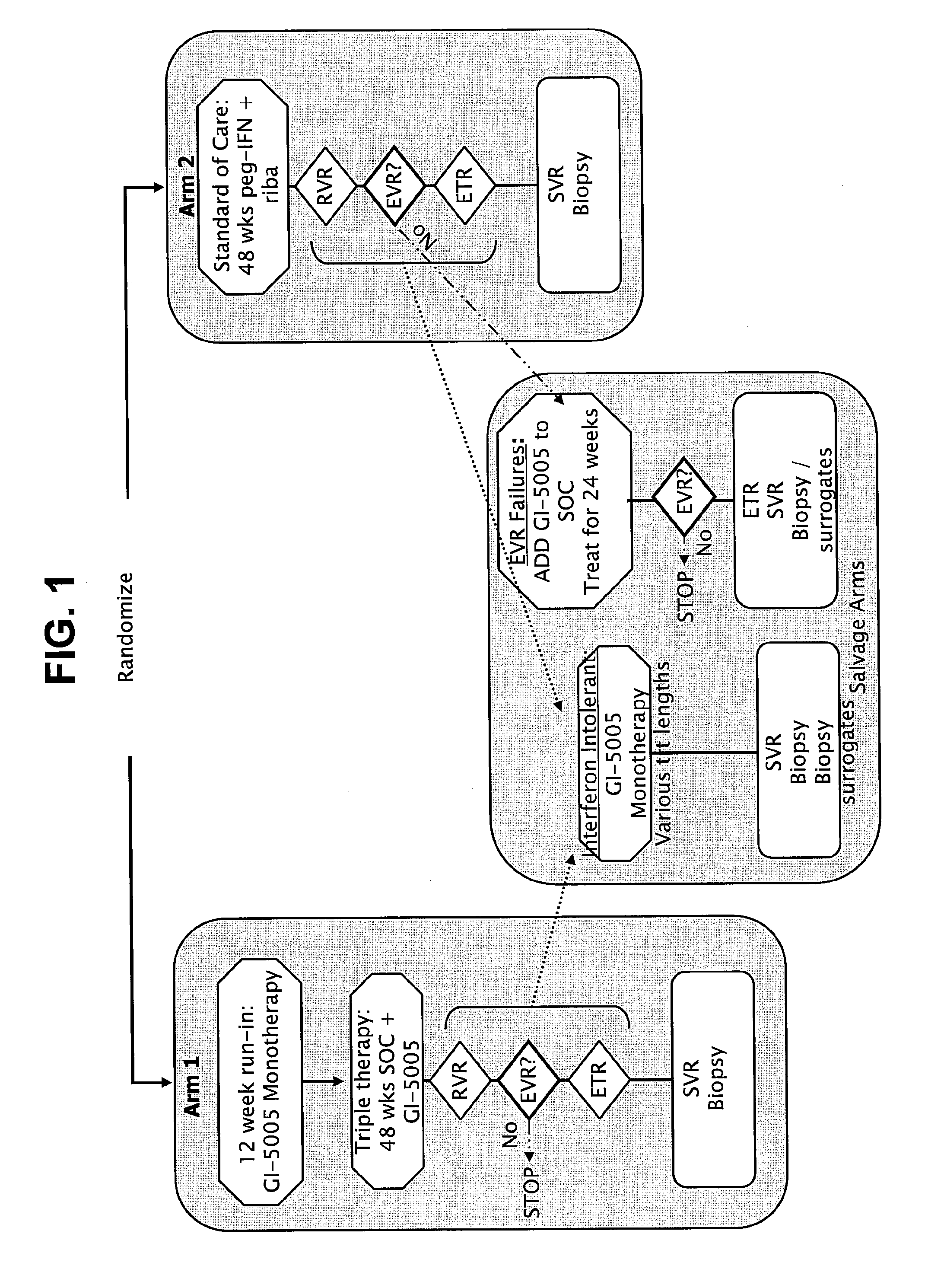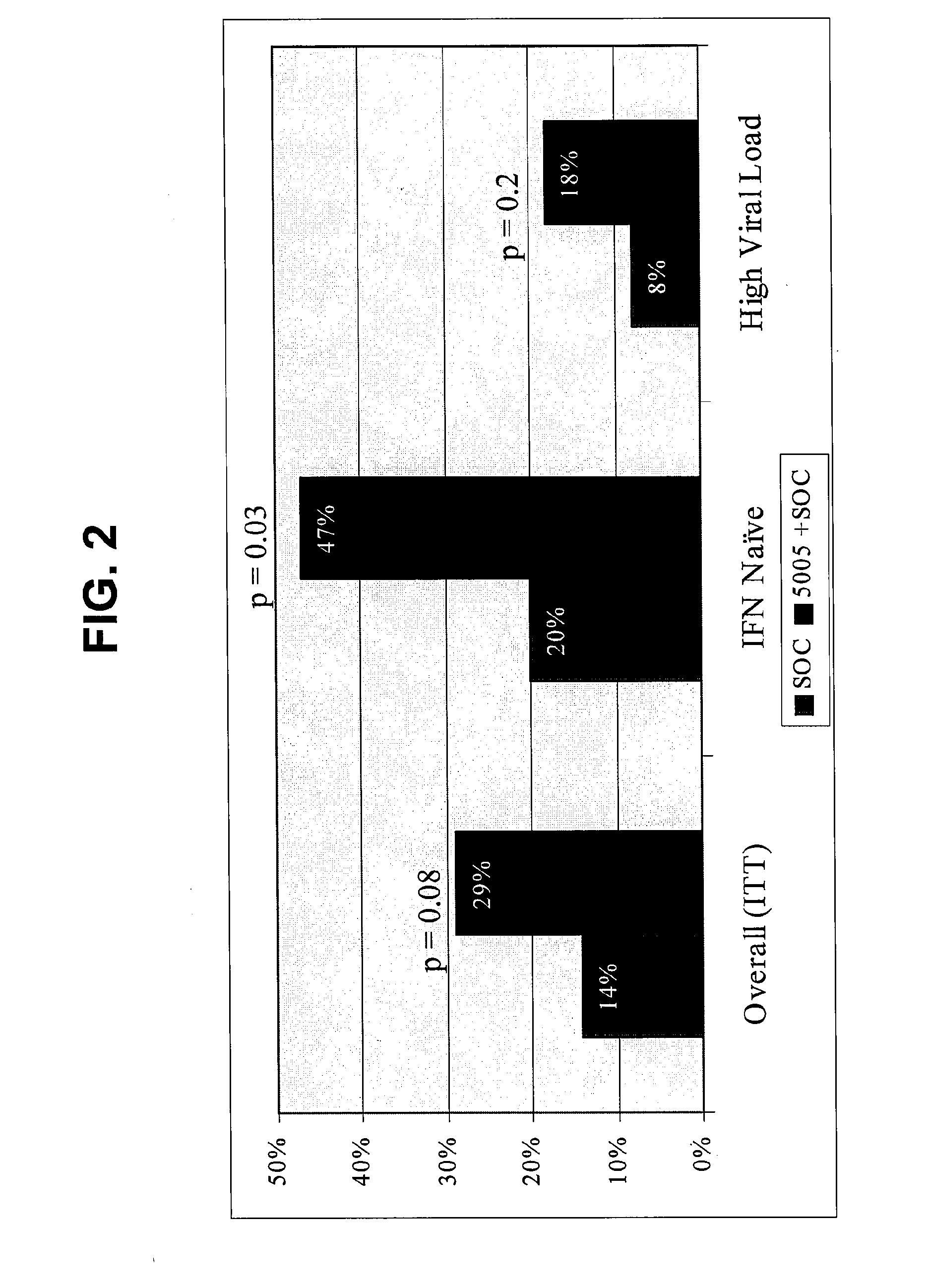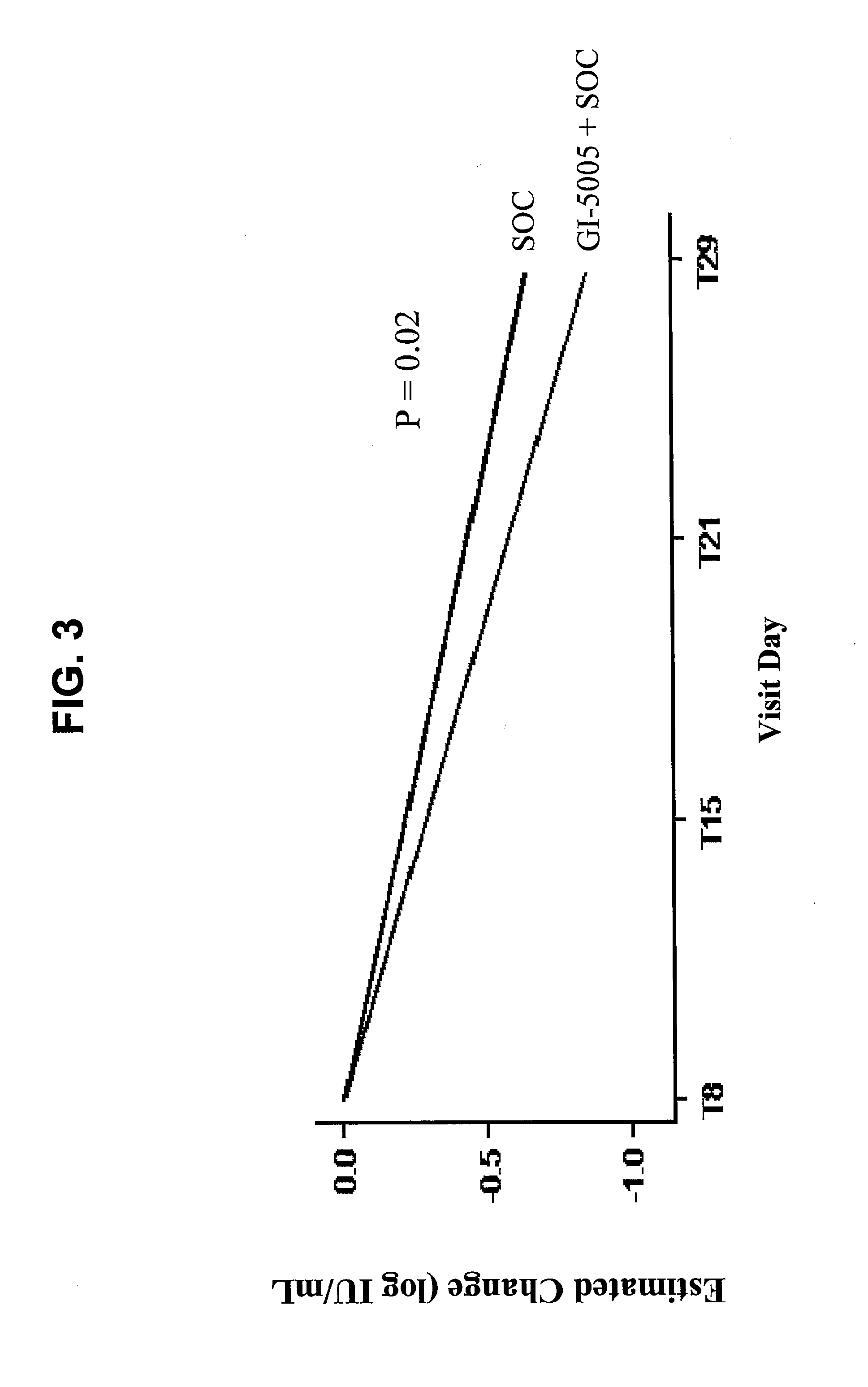Immunotherapy for chronic hepatitis c virus infection
a technology for hepatitis c virus and immunotherapy, which is applied in the direction of immunological disorders, antibody medical ingredients, peptide/protein ingredients, etc., can solve the problems of limited effectiveness of current standard treatment with interferon and ribavirin, the proportion of hcv-infected persons that can be successfully treated using, and the current soc is poorly tolerated, so as to reduce the number of breakthrough subjects
- Summary
- Abstract
- Description
- Claims
- Application Information
AI Technical Summary
Benefits of technology
Problems solved by technology
Method used
Image
Examples
example 1
[0247]The following example describes the results of a phase 1b clinical trial of human subjects treated using immunotherapy as a monotherapy.
[0248]In a completed phase Ib clinical trial of GI-5005 monotherapy in human subjects, administration of GI-5005 resulted in dose dependent biochemical (ALT) normalization, decreases in viral load up to 1.4 log10, and induction of HCV-specific T cell responses, including both HCV NS3- and HCV Core-specific T cell responses. Importantly, none of these results were observed in the placebo controls. The phase 1b trial was a randomized, double-blind, placebo-controlled, multi-center, dose cohort-escalation, therapeutic trial evaluating the subcutaneous administration of 7 doses of GI-5005 monotherapy compared to placebo dosing in human subjects. The enrolled subjects had chronic HCV infection with high circulating virus levels and were either treatment naïve, or partial responders or relapsers to an interferon-based regimen (pegylated or non-pegyl...
example 2
[0257]The following example shows results from an interim analysis of a phase 2 clinical trial in humans, demonstrating that administration of an immunotherapeutic composition to patients chronically infected with HCV prior to combination therapy with interferon and ribavirin significantly improves the rapid viral response (RVR) in treatment naïve patients, and shows an advantage in prior non-responders and patients with high titer HCV RNA.
[0258]GI-5005 is a whole heat-killed S. cerevisiae immunotherapy expressing high levels of HCV NS3 and Core antigens. GI-5005 has been designed to elicit antigen-specific host CD4 and CD8 T-cell responses with the goal of improving the rate of immune clearance of HCV. The GI-5005-02 phase 2 study evaluates the efficacy and safety of GI-5005 plus peg-IFN / ribavirin (SOC) in subjects with genotype 1 chronic HCV infection.
[0259]FIG. 1 shows the schematic design of the phase 2 study of GI-5005 in combination with SOC. Genotype 1 subjects with chronic H...
example 3
[0269]The following example shows results from the complete four week virologic endpoint analysis of the phase 2 clinical trial of subjects treated with GI-5005 immunotherapy in combination with interferon / ribavirin therapy, demonstrating that administration of an immunotherapeutic composition to patients chronically infected with HCV prior to combination therapy with interferon and ribavirin results in a trend toward improvement of the rapid viral response (RVR), as well as continued improved second phase viral clearance kinetics, in all major patient subgroups.
[0270]This Example describes the analysis of all patients in both arms of the phase 2 clinical trial described in Example 2 after completion of four weeks of therapy with interferon / ribavirin. Results present the safety, viral kinetics, and RVR for the complete dataset.
[0271]Rapid virologic response (RVR), defined as HCV RNA negativity by PCR assay (<25 IU / mL) by 4 weeks of therapy, is highly predictive of future sustained v...
PUM
| Property | Measurement | Unit |
|---|---|---|
| Time | aaaaa | aaaaa |
| Time | aaaaa | aaaaa |
| Time | aaaaa | aaaaa |
Abstract
Description
Claims
Application Information
 Login to View More
Login to View More - R&D
- Intellectual Property
- Life Sciences
- Materials
- Tech Scout
- Unparalleled Data Quality
- Higher Quality Content
- 60% Fewer Hallucinations
Browse by: Latest US Patents, China's latest patents, Technical Efficacy Thesaurus, Application Domain, Technology Topic, Popular Technical Reports.
© 2025 PatSnap. All rights reserved.Legal|Privacy policy|Modern Slavery Act Transparency Statement|Sitemap|About US| Contact US: help@patsnap.com



